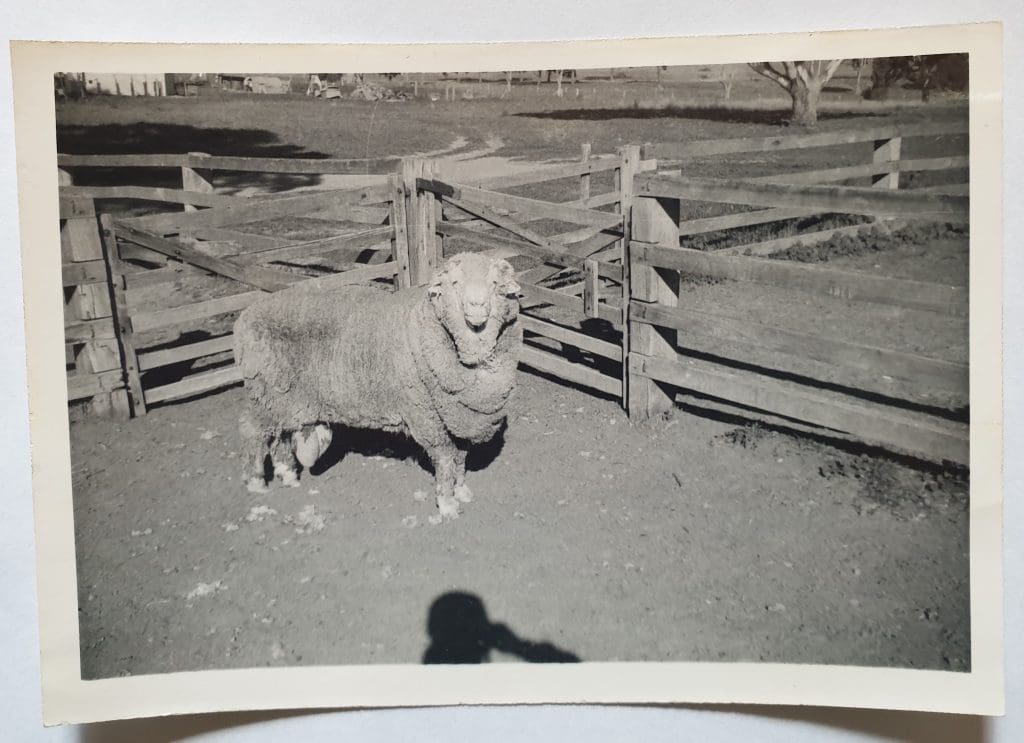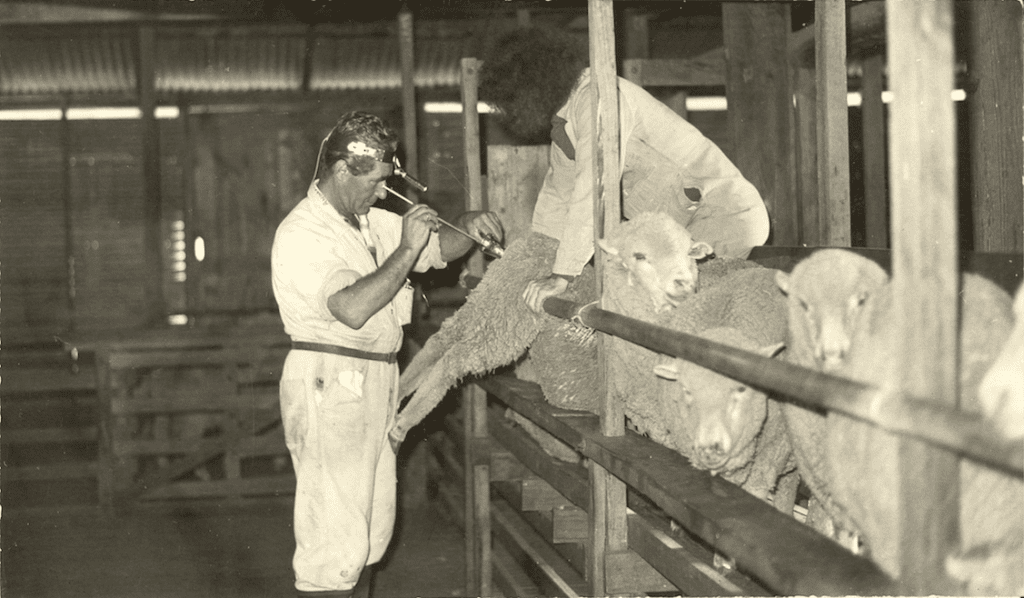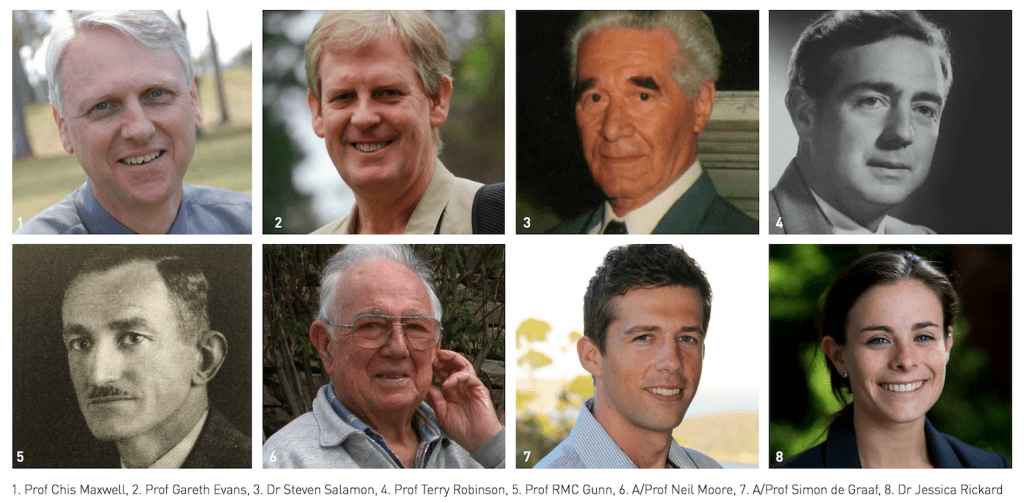FIFTY year-old ram semen has demonstrated high fertility rates after being thawed and inseminated as part of the 2018 Balmoral Merino Sire Evaluation program.
Frozen in 1968 by Dr Steven Salamon of The University of Sydney, the 50 year-old semen comprised a pool of semen from four rams of Ledgworth, Merryville and Boonoke genetics, owned at the time by the Walker family of Ledgworth (and latterly Woolaroo), Yass.
Australian Wool Innovation general manager for research Dr Jane Littlejohn explained AWI’s predecessors, Australian Wool Research and Promotion Organisation (AWRAP), the Australian Wool Commission and Australian Wool Corporation co-funded much of the pioneering work into frozen semen and the laparoscopic insemination technology.
“Remarkably, pregnancy scanning results indicate that despite 50 years of storage the sperm are as fertile as the day the semen was frozen, with pregnancy and scanning rates no different to the overall average of all sires who were also artificially inseminated in the Balmoral program,” Dr Littlejohn said.
“The high fertility of this semen demonstrates that long-term frozen storage of sperm is safe and reliably preserves genetics for future use in the agriculture industry.
“This trial offers a remarkable opportunity to open a window to the industry’s past and in doing so also contemplate the future of sheep selection and genetics and what we might expect to see in 50 years’ time,” she said.
“Beyond insights into artificial breeding and semen freezing technology, use of this semen also stands to showcase 50 years of genetic progress of the Australian wool industry.
“Continued support from AWI aims for current research projects to build on this legacy and deliver the next generation of assisted reproductive technologies for the sheep industry.”
The rams’ progeny will be on display at the Balmoral Merino Sire Evaluation Field Day on Friday 22 February 2019 at ‘Kooringal’, 2115 Coleraine-Edenhope Road, Coleraine, Victoria.
Originally frozen to prove sperm could survive storage in liquid nitrogen (-196°C) for several years, the bank of semen is thought to be oldest known to be in existence of any species (human or animal) anywhere in the world.
Remarkably, pregnancy scanning results indicate that despite 50 years of storage the semen is as fertile as the day it was frozen, with pregnancy and scanning rates no different to the overall average of all sires in the program (see Table below).
The high fertility demonstrates that long term frozen storage of sperm is safe and reliably preserves genetics for future use, not just for agriculture, but also human medicine.
This is of particular importance to young male cancer patients, who have stored semen prior to radiation treatment and/or chemotherapy, and may want to start a family decades later, but are unable to conceive naturally.
Collected and frozen in 1968 by Dr Steven Salamon of The University of Sydney, the 50-year-old semen comprises a pool of four rams of Ledgworth, Merryville and Boonoke genetics owned at the time by the Walker family of Ledgworth (and latterly Woolaroo), Yass.
The Boonoke ram (known as ‘Sir Fred’ – pictured below) was born in 1959 and sold to Ledgworth in 1961 for 345 guineas.
The Merryville ram, born in 1963 was bought by Ledgworth in 1965 for 1000 guineas.
The other two rams in the pool are F1 progeny of the Boonoke and Merryville rams (crossed with Ledgworth ewes), and born in 1963 and 1965, respectively.

Sir Fred, born in 1959, is one of four rams who contributed to the pool of semen frozen in 1968. Ledgworth purchased the ‘Sir Fred’, a Boonoke ram, in 1961 for 345 guineas. The photo was taken when Sir Fred was a 10 year old. PHOTO: Peter Walker, ‘Woolaroo’, Yass.
Beyond insights into artificial breeding and semen freezing technology, use of this semen also stands to showcase 50 years of genetic progress of the Australian wool industry.
Comparison of the performance and appearance of lambs produced from the 50-year-old semen with those sired by the modern rams in the Balmoral program will be of great interest as the 2018 drop lambs are assessed over the next few years.
This is a unique opportunity to open a window on the industry’s past and, in doing so, contemplate what we might expect to see in 50 years’ time. Reports on the 2018 drop Sire Evaluation will be available on the Merino Superior Sires website after their first shearing in March 2019 (see merinosuperiorsires.com.au/merino-sireevaluation-sites/balmoral/).
For researchers at The University of Sydney, looking down the microscope at sperm cells swimming for the first time in 50 years, is a reminder of the remarkable discoveries our predecessors made to enable the commercial development of artificial insemination of sheep, scientists such as:
• Professor RMC Gunn, the Australian pioneer of the study of ram semen and more broadly the artificial breeding of sheep who was active from the 1920s-1950s. He established the procedures still used today for the assessment of the fertility of rams and launched a dynasty of sheep reproduction research at The University of Sydney.
• Professor Terry Robinson, who developed the progestagen sponge in the early 1960s to control the time of oestrus and ovulation of sheep, a method still used in today’s programs through the use of CIDRs.
• Dr Steven Salamon, who established a simple and reliable method for the frozen storage of ram semen and refined the processes required for cervical artificial insemination.
• Associate Professor Neil Moore, an early pioneer of embryo transfer of sheep.
• Professor Chis Maxwell (a student of Salamon), who optimsed procedures for laparoscopic artificial insemination of sheep and, along with his colleague Professor Gareth Evans (a student of Robinson), applied the laparoscopic technique to the insemination of superovulated ewes. Professors Evans and Maxwell were also responsible for the successful development sperm sexing technology in sheep.
Notably, Robinson, Salamon, Maxwell and Evans were all made Members of the Order of Australia, largely for their significant service to the field of artificial breeding of sheep.
It is also notable that much of this research informed the development of many human reproductive technologies, often only applied in human medicine long after their availability in sheep.
AWI’s predecessors (Australian Wool Board 1936-70, Australian Wool Commission 1970-73, Australian Wool Corporation 1973-93 and the Australian Wool Research and Promotion Organisation 1993-2001) co-funded much of this pioneering work by The University of Sydney. Concurrently, similar research efforts were undertaken overseas, most notably by the French (French National Institute of Agriculture; INRA).
These shared research interests resulted in significant movement of researchers and ideas between Australia and France and a strong and long-term collaborative research effort which continues to this day. In recent decades, Ireland (primarily Teagasc researchers) has also contributed major scientific investment, collaboration and output in this field.
The collaborative spirit between researchers in these three countries has resulted in a productive three-way partnership in sheep artificial breeding research between Australia, France and Ireland.
Continuing investment from AWI in The University of Sydney’s current research projects support Associate Professor Simon de Graaf (a student of both Evans and Maxwell) and Dr Jessica Rickard (a student of de Graaf; current McCaughey Research Fellow) to build on this legacy and deliver the next generation of assisted reproductive technologies to meet the sheep industry’s needs in a market increasingly sensitive to laparoscopic AI and the use of PMSG (Pregnant Mare Serum Gonadotropin) to stimulate the ewe to cycle.
For further information please contact Associate Professor Simon de Graaf at The University of Sydney (simon.degraaf@ sydney.edu.au; 0403295962) and Geoff Lindon AWI Program Manager Genetics ([email protected])
Source: Australian Wool Innovation, University of Sydney, Australian Merino Sire Evaluation Association, Balmoral Breeders.




HAVE YOUR SAY